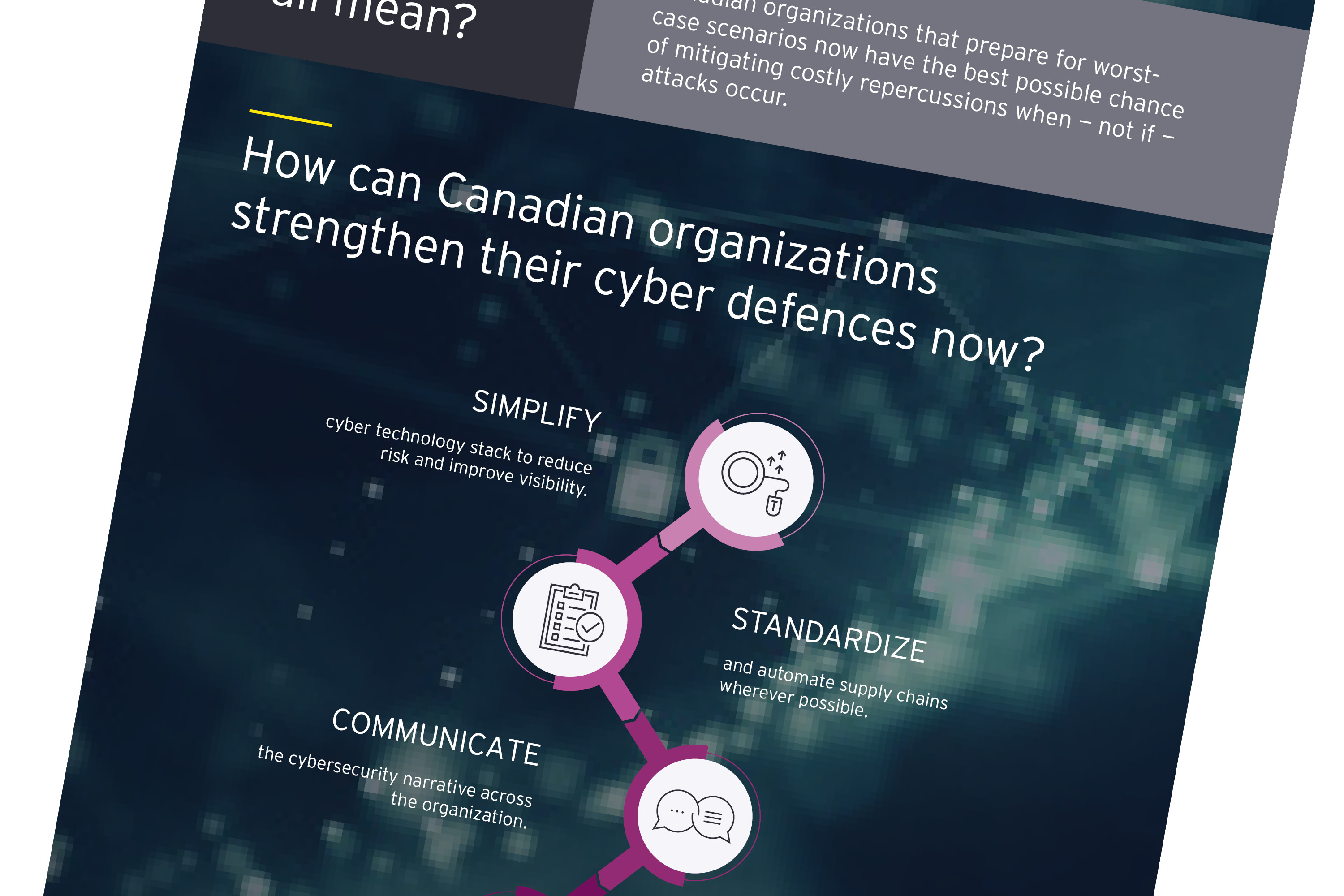How can Canadian companies evolve cybersecurity now?
Companies can strengthen their cybersecurity by emphasizing resilience and building this priority into critical business processes and their underlying technologies across the organization.
What should Canadian businesses keep in mind?
1. Simplify the cyber technology stack to reduce risk and improve visibility. Automation and orchestration can reduce clutter in the technology environment, allowing you to detect signals more quickly and respond more effectively.
2. Standardize and automate supply chains wherever possible. This can help by improving cyber vigilance and enabling you to continuously monitor performance without adding undue additional layers of bureaucracy. Be sure to involve security teams in the vendor selection process.
3. Communicate the cybersecurity narrative across the organization. Business stakeholders must understand what the organization is up against. The most effective CISOs can translate that story effectively, in ways that resonate with the business in terms of risk buydown, business impact and business creation.
4. Combine incremental and well-designed training with automation. Human error continues to be a leading cause of cyber breaches. The right mix of employee training and technology — think prevention tools — can make your workforce cyber-secure by design.
5. Dismantle silos to weave cybersecurity into the organization’s fabric. Cybersecurity should be viewed as a value driver, not an inhibitor or a cost centre. Connecting cybersecurity to every functional department and area of the business instills the confidence necessary to innovate, and opens new revenue and market opportunities.
6. Invest in business resilience. Organizations must also be prepared to detect and withstand incidents by reacting decisively and immediately when a breach occurs. Build out robust plans that go beyond early detection alone to cover instant-response and disaster-recovery planning, and clear outlines of responsibilities, roles and accountabilities. Then, simulate and prepare so that everyone involved knows exactly what they’ll do, when and how to isolate problems, and keep critical systems/operations going in the event that an attack takes place.



